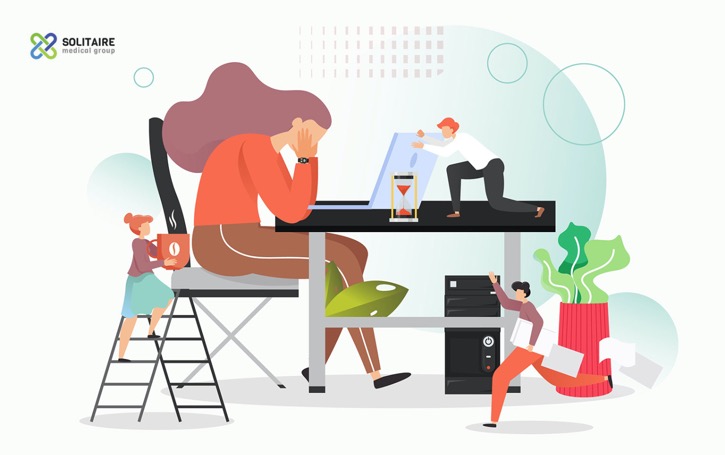As millions of Australians are still working from home, perhaps panic-working-from-home, burnouts are the real deal.
While WFH comes with added flexibility, it also means missing out on the vibrancy of your workplace. Missing out on the informal information exchange and getting demotivated. Perhaps clocking in far more hours than you usually do and trying to finish up your work without any excitement.
For instance, a survey found 49% of Australian parents who work from home reported finding it challenging to combine work and care responsibilities.
What is burnout?
Burnout is a reaction to chronic job stress characterised by three main traits – exhaustion due to work reduced productivity, and cynicism (less identification with the job)
It was officially recognised as a medical syndrome by the World Health Organisation in 2019.
A survey conducted by the work-management app, Asana found that Australia has one of the highest rates of burnouts in the world.
What are the sign and symptoms of burnout?
Read the slides!
After all, working from home also allows you to enjoy more flexible time and a better work-life balance. So, you have ample opportunity to beat burnouts like a boss.
Now, take a step back for a moment, take a deep breath and read how to beat burnouts.
1) First up, literally shut down your systems and go for a walk
Green trees, grass, or even the buildings or the cafes nearby, no matter where you live, going outside for a walk or a stroll is always refreshing.
Even a short bout of walking lasting anything between 10 to 15 minutes is enough to improve your mood.
A study found that taking just 20 minutes off from your schedule to spend outside in nature is enough to lower your stress levels.
2) Find yourself an easy and attainable workflow
Now that you’re working from home full-time, it doesn’t mean you need to stick to the 9 to 5 schedule unless necessary.
Establish a start and end time for your days, and don’t push yourself too hard if you can’t meet your deadlines because if you feel run down, you can’t be effective anyhow.
3) Enhance your motivation by learning a new work-skill
One way to enhance motivation is learning something new. For example, working on new software, upskilling your coding, or executing a new marketing strategy.
When you fill your day with exciting and new challenges, it doesn’t seem like a challenge anymore.
4) Just turn off for a few moments
In between your work, and we’re sure it happens to many of us, just take a break if you feel stressed out.
Taking a quick break helps to avoid burnout. Even when work is too busy, a short interval such as a quick run downstairs to grab a coffee or a phone call to your family won’t harm you.
5) We can’t stress enough the benefits of self-caring
Eating healthy and exercise is crucial, but doing things that brings joy and adding them to your schedule is a great way to relieve burnout.
Doing something that brings you personal happiness is rewarding. It could be a skincare routine, a sport you like to play, or cooking a delicious meal yourself. So, set yourself some time and purely indulge in self-caring.
6) Have you tried a staycation yet?
Well, in South Australia, we’re blessed with amazing landscapes.
Now that international borders are still closed, a staycation for a week could be a great adventure.
Just pack some clothes, take your laptop, and hit the roads. And why not? South Australia features some of the countries most picturesque staycation options; Check this article for 6 great spots for a SA staycation while still working from home, well from a staycation.
7) Buddy up with your teammates
It might sound cliche, but buddying up with your teammates can add interest. Discuss your day-to-day workflow, set your own KPIs, discuss the pros and cons of a strategy, and brainstorm together.
The idea is to generate and strike a conversation that can help you feel more office-like if you have been working all alone from home.
8) And how can we forget the importance of a balanced diet
Mental health and food are closely linked. Eating a healthy and balanced diet is associated with influencing sound mental health.
And although there is no specific superfood or diet that can help alleviate your mood, the key is eating a variety. Eat serves from all five food groups – fruits and vegetables, whole grains, meat, poultry, and drinking plenty of water.

